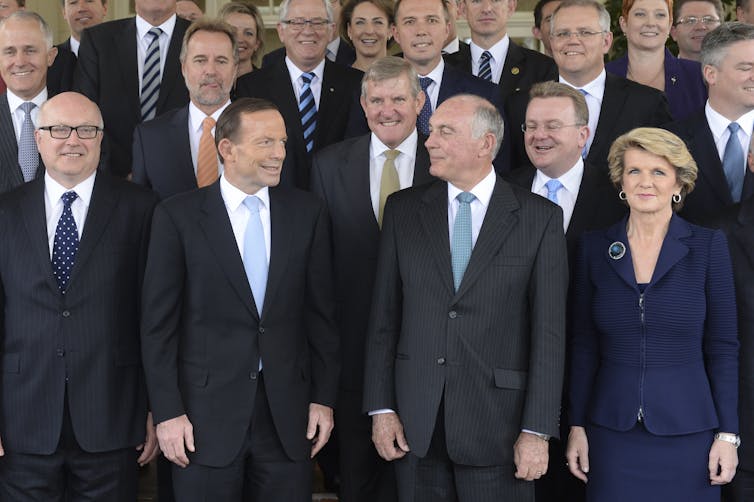
Tony Abbott has given his ministers their report cards for the year. Apparently they are all receiving As and A+s.
That might mean they are very, very clever compared to all other ministers who have done the job the past. This is what we call norm-referenced assessment. We start with a benchmark of what a “satisfactory” minister performance is, and we call that a “C”. Then we judge other ministers’ performances against that benchmark.
This is the kind of assessment the government requires all schools to do.
A - E reporting
In the government mandated A to E reporting in schools, “C” is “expected performance for their age”. “A” is for those performing a couple of years ahead of what would be expected for their age.
So, if the prime minister is using the same norm-referenced assessment method he requires all schools to use, this would mean all the Abbott government ministers are demonstrating skills and talents way beyond their years of experience as compared to all other ministers who have ever done the job.
This is statistically unlikely. Certainly a school would be investigated if all their students were being given As.
A for effort
It is far more likely Prime Minister Abbott is using a different assessment method – one which is individual and criterion-based. So, rather than comparing against a normed benchmark of satisfactory performance, each individual is assessed against a set of criteria.
By giving all his ministers an A or an A+ he is saying that each has done the best they could with what they have.
Taking circumstances into consideration
The assessment criteria were probably outlined in the content of the “charter letter” he provided his ministers.
The assessment was accompanied by a one on one interview, where cognitive capacity, individual starting points, interpersonal skills, the environment they work in, any personal circumstances, the support they receive and the resources they have at their disposal were probably all taken into account.
These are all important contextual considerations that effect any individual’s capacity to perform against criteria.
No doubt it was these contextual considerations that helped push under-performers like Abetz, Brandis and Hockey up into As.
Under a norm-referenced system they may have received a D, and that would have been counter productive to their future development. It would have destroyed their self-confidence and reduced their motivation.
The ministers’ A grades probably came with some explanatory commentary. For example, “despite challenges with interpersonal communication, Eric has shown a willingness to learn”. Or “despite a lack of deep understanding of the content, Joe has been a real team player”. Or “George is a product of his time and is doing his job to the best of his ability”.
This is a fair assessment process – it takes into account personal capacity, effort and external circumstances beyond the individual’s control.
Using this process, we wouldn’t assign a norm-referenced “D” to the 7 year old with the learning difficulty, destroying their self-belief. There would be no “D” for the 16 year old refugee from Sierra Leone, who never had the chance to go to school until he arrived in Australia as a 14 year old.
Instead, an “A” would recognise the extraordinary progress he has made in English in his short 18 months in the country. There would be no judgmental “D” for the 13 year old who is missing too many classes because she is caring for younger siblings and desperately trying to keep the family together.
A new model of assessment for schools?
Now that the prime minister has modelled this fairer assessment process for us, I guess that is the “heads up” to use it in school A to E reporting, as well as NAPLAN reporting.
And that would mean the end to the MySchool site as we currently know it … and no more school leagues tables … or PISA comparison charts …
Bring it on!
